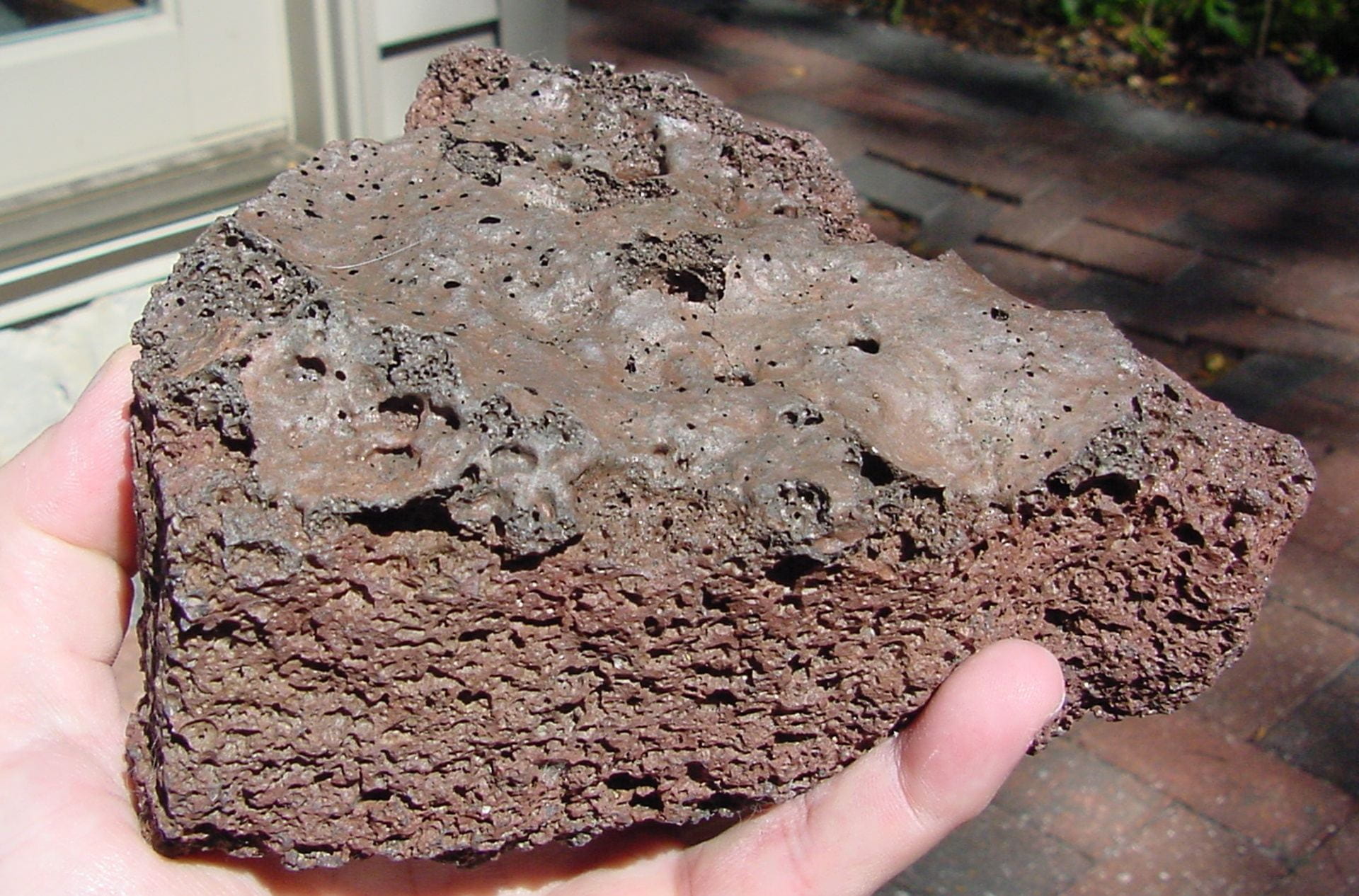Basalt
Terrestrial basalts
Basalt and related rock types like andesite and dacite are rocks that form when volcanoes erupt magma (lava) onto the surface of the earth and the magma cools.


Terrestrial basalts come in a wide variety of textures and colors. Some have vesicles (gas bubbles); some do not. Some are gray, others are reddish or even greenish. Basalt is one of the most common rock types on Earth. Except for the coral, nearly all of the rocks of Hawaii are basalts. Much of Oregon and Idaho is covered with basalt.




Planetary basalts
Basaltic volcanism has occurred on other terrestrial planets, too. Venus, Mars, the Moon, and some of the largest asteroids had volcanoes that produced basalt. Only about 0.9% of all meteorites are basalts but about 16% of those meteorites known as achondrites (see statistics) are basalts. Eucrites are meteorites from volcanos on large asteroids like 4-Vesta. About 16% of eucrites are unbrecciated basalts. About 5% of the lunar meteorites are unbrecciated basalts. Most, about 86%, of the Martian meteorites are basalts (all of those meteorites known as shergottites). All basalts, regardless of where they were formed, are similar because the process that formed them (melting in the interior of a planet) is the same.
In the absence of a fusion crust, the only sure way to distinguish a terrestrial (Earth) basalt from a basaltic meteorite (Moon, Mars, asteroid) is with expensive chemical or mineralogical tests.




Bottom line
If you have a basalt or other volcanic rock, then it is not a meteorite. Such rocks are very common on Earth but are uncommon among meteorites.